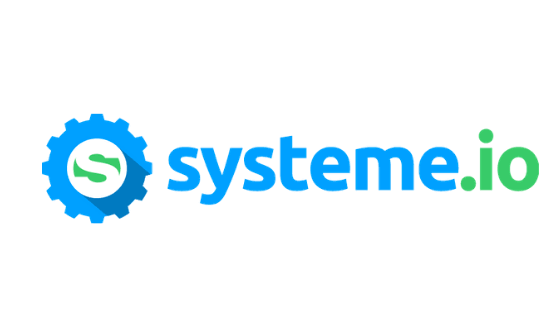The affiliate funnel is a structured pathway that guides potential customers from initial awareness of a product to the final purchase decision. This funnel typically consists of several stages: awareness, interest, decision, and action. At the top of the funnel, marketers aim to attract a broad audience through various channels such as social media, blogs, and paid advertising.
The goal is to create awareness about the products or services being promoted. As potential customers move down the funnel, they become more engaged and informed, leading to a higher likelihood of conversion. In the interest stage, marketers provide valuable content that addresses the needs and pain points of their audience.
This could include informative blog posts, videos, or webinars that highlight the benefits of the affiliate products. As prospects progress to the decision stage, they are presented with comparisons, reviews, and testimonials that help them evaluate their options. Finally, in the action stage, clear calls-to-action (CTAs) and incentives such as discounts or bonuses encourage users to make a purchase.
Understanding this funnel is crucial for affiliate marketers as it allows them to tailor their strategies to effectively guide prospects through each stage.
Key Takeaways
- Understanding the Affiliate Funnel: The affiliate funnel is a step-by-step process that guides potential customers from initial awareness to making a purchase, with the affiliate marketer earning a commission.
- Choosing the Right Affiliate Products: It’s crucial to select high-quality, relevant products that align with your audience’s needs and interests to maximize conversions and build trust.
- Creating Compelling Landing Pages: Effective landing pages should be visually appealing, have clear and concise messaging, and include a strong call-to-action to encourage visitors to take the next step.
- Crafting Persuasive Email Sequences: Email sequences should provide valuable content, build rapport, and strategically promote affiliate products to drive conversions.
- Implementing Effective Upsells and Downsells: Upsells and downsells can increase the average order value and overall revenue by offering complementary products or alternative options to customers.
Choosing the Right Affiliate Products
Selecting the right affiliate products is a critical step in building a successful affiliate marketing strategy. The products should not only align with your niche but also resonate with your target audience’s interests and needs. Conducting thorough market research can help identify trending products that have a high demand.
Tools like Google Trends or social media analytics can provide insights into what consumers are currently interested in. Additionally, evaluating the commission structure of various affiliate programs is essential; higher commissions can lead to greater profitability, but they should not come at the expense of product quality. Moreover, it’s important to consider the reputation of the affiliate program and the products being offered.
Promoting low-quality or unreliable products can damage your credibility and trust with your audience. Look for products that have positive reviews and a solid track record of customer satisfaction. Engaging with your audience through surveys or feedback can also provide valuable insights into what products they would be interested in purchasing.
By carefully selecting affiliate products that meet these criteria, marketers can enhance their chances of success and foster long-term relationships with their audience.
Creating Compelling Landing Pages
Landing pages serve as a crucial element in converting visitors into customers within the affiliate funnel. A well-designed landing page should be visually appealing and focused on a single objective: converting visitors into leads or customers. This means eliminating distractions such as unnecessary links or excessive information that could divert attention from the primary call-to-action.
The use of compelling headlines and engaging visuals can capture visitors’ attention and encourage them to stay on the page longer. In addition to aesthetics, the content on landing pages must be persuasive and relevant to the target audience. Highlighting the unique selling propositions (USPs) of the affiliate product can help differentiate it from competitors.
Incorporating elements such as bullet points for easy readability, testimonials for social proof, and clear CTAs can significantly enhance conversion rates. A/B testing different versions of landing pages can also provide insights into what elements resonate best with your audience, allowing for continuous optimization.
Crafting Persuasive Email Sequences
| Metrics | Value |
|---|---|
| Open Rate | 25% |
| Click-through Rate | 10% |
| Conversion Rate | 5% |
| Engagement Rate | 15% |
Email marketing remains one of the most effective tools for nurturing leads and driving conversions in affiliate marketing. Crafting persuasive email sequences involves creating a series of emails that guide subscribers through the affiliate funnel. The first email should focus on building rapport and providing value, such as sharing useful tips or insights related to the niche.
This establishes trust and positions you as an authority in the field. Subsequent emails can introduce affiliate products in a way that addresses specific pain points or desires of your audience. For instance, if you’re promoting a fitness program, you might share success stories or case studies that demonstrate its effectiveness.
Including limited-time offers or exclusive discounts can create urgency and encourage subscribers to take action. Personalization is also key; addressing subscribers by name and segmenting your list based on interests can lead to higher engagement rates. By carefully crafting these email sequences, marketers can effectively nurture leads and drive them toward making a purchase.
Implementing Effective Upsells and Downsells
Upselling and downselling are powerful strategies that can significantly increase revenue in affiliate marketing. An upsell involves offering a more expensive product or an additional item that complements the original purchase, while a downsell provides a lower-priced alternative if the customer declines the initial offer. Implementing these strategies requires careful planning and timing to ensure they enhance rather than detract from the customer experience.
For example, after a customer purchases a digital course on photography, an upsell could be an advanced course on editing techniques or a bundle that includes presets for photo editing software. Conversely, if a customer shows interest in a premium subscription but hesitates due to price, offering a basic version at a lower cost can capture that sale instead of losing it entirely. The key is to present these options seamlessly during the checkout process or shortly after the initial purchase, ensuring they feel like natural extensions of the customer’s journey rather than aggressive sales tactics.
Leveraging Retargeting Strategies
Retargeting is an essential strategy for re-engaging potential customers who have shown interest in your affiliate products but did not complete a purchase. By using cookies to track visitors who have interacted with your website or landing pages, marketers can serve targeted ads to these individuals across various platforms, reminding them of what they left behind. This approach keeps your products top-of-mind and encourages users to return and complete their purchase.
Effective retargeting campaigns often involve creating tailored ads that address specific behaviors exhibited by users. For instance, if someone visited a landing page for a skincare product but did not make a purchase, retargeting ads could showcase testimonials or highlight limited-time discounts specifically for that product. Additionally, utilizing dynamic retargeting allows marketers to display ads featuring products that users viewed, making the ads more relevant and personalized.
By strategically implementing retargeting strategies, marketers can significantly improve conversion rates and maximize their return on investment.
Utilizing Social Proof and Testimonials
Social proof is a psychological phenomenon where individuals look to others’ actions or opinions to guide their own decisions. In affiliate marketing, leveraging social proof through testimonials, reviews, and user-generated content can significantly enhance credibility and trustworthiness. When potential customers see positive feedback from others who have purchased and benefited from a product, they are more likely to feel confident in their decision to buy.
Incorporating testimonials into landing pages or email sequences can be highly effective. Video testimonials can be particularly impactful as they add a personal touch and authenticity that written reviews may lack. Additionally, showcasing user-generated content on social media platforms can create a sense of community around your brand and products.
Encouraging satisfied customers to share their experiences not only provides valuable content but also fosters engagement with your audience. By effectively utilizing social proof, marketers can build trust and influence purchasing decisions.
Optimizing for Mobile Conversions
With an increasing number of consumers using mobile devices for online shopping, optimizing for mobile conversions has become imperative in affiliate marketing. A mobile-optimized website ensures that users have a seamless experience regardless of the device they are using. This includes responsive design that adjusts layout elements based on screen size, fast loading times, and easy navigation.
Moreover, simplifying the checkout process is crucial for mobile users who may be less patient than desktop users. Implementing features such as one-click purchasing options or mobile wallets can streamline transactions and reduce cart abandonment rates. Additionally, ensuring that all content is easily readable on smaller screens—using larger fonts and clear CTAs—can enhance user experience significantly.
By prioritizing mobile optimization, marketers can tap into this growing segment of consumers and improve overall conversion rates.
A/B Testing for Maximum Conversions
A/B testing is an invaluable method for optimizing various elements of your affiliate marketing strategy to maximize conversions. This process involves comparing two versions of a webpage, email, or ad to determine which one performs better based on specific metrics such as click-through rates or conversion rates. By systematically testing different variables—such as headlines, images, CTAs, or even color schemes—marketers can gain insights into what resonates most with their audience.
For instance, if you’re testing two different landing page designs, you might find that one version with a bold headline significantly outperforms another with more subdued text. This data-driven approach allows marketers to make informed decisions rather than relying on assumptions about what might work best. Continuous A/B testing fosters an environment of ongoing improvement; even small tweaks can lead to substantial increases in conversions over time.
Building Trust and Credibility with Your Audience
Trust is a cornerstone of successful affiliate marketing; without it, potential customers are unlikely to make purchases based on recommendations from affiliates. Building trust involves being transparent about affiliations and providing honest reviews of products rather than solely focusing on sales pitches. Sharing personal experiences with products can create authenticity and relatability that resonates with your audience.
Additionally, engaging with your audience through comments or social media interactions fosters a sense of community and connection. Addressing questions or concerns promptly demonstrates that you value their input and are genuinely interested in helping them find solutions to their problems. Consistently delivering high-quality content that educates or entertains further solidifies your position as a trusted authority in your niche.
Scaling Your Affiliate Funnels for Long-Term Success
Once you have established an effective affiliate funnel that generates consistent conversions, scaling becomes the next logical step for long-term success. This involves expanding your reach through various channels such as paid advertising, influencer partnerships, or content marketing strategies like guest blogging or podcast appearances. Diversifying traffic sources not only increases visibility but also mitigates risks associated with relying solely on one platform.
Moreover, analyzing data from your existing funnels can reveal opportunities for optimization and expansion. Identifying high-performing products or traffic sources allows you to allocate resources more effectively toward strategies that yield the best results. Automating certain processes—such as email sequences or retargeting campaigns—can also free up time for further growth initiatives while maintaining efficiency in operations.
By strategically scaling your affiliate funnels, you position yourself for sustained success in an ever-evolving digital landscape.
If you’re looking to maximize commissions with high-converting affiliate funnels, you may want to check out this article on Maximizing Affiliate Campaign Performance with Tracked Links


